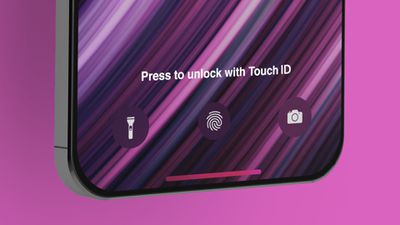Despite having tested and worked on the technology, Apple has decided not to include an under-screen Touch ID sensor with the upcoming iPhone 13, continuing to leave customers with Face ID as the only biometric authentication option for the iPhone.

Apple had been testing Touch ID technology that would have allowed the company to place the sensor under the display on the iPhone, allowing users to simply put their finger on the display to authenticate. While Apple regularly tests and researches new ideas and technologies, reports earlier in the year had suggested the company was on track to include Touch ID under the display with the 2021 iPhones.
Now, however, Apple's plans have shifted dramatically, as Bloomberg's Mark Gurman reports in his latest Power On newsletter, an under-screen Touch ID sensor "won't make the cut" for the iPhone 13. Gurman states that Apple's eventual goal is to embed Face ID under the display rather than Touch ID.
The second-generation iPhone SE is currently the only iPhone within the lineup that features Touch ID, but it has made a recent reappearance in the iPad. With the latest-generation iPad Air, Apple engineers were able to embed Touch ID into the Power Button. Apple could choose to bring that same technology to future low-end iPhones while keeping Face ID exclusive to higher-end models.
The reasons for Apple's decision to scrap its initial plan to include Touch ID with the iPhone 13 remains unknown; however, the company may not have felt that the technology is mature enough yet to go mainstream in its flagship iPhones. Alternatively, the company may have felt less pressure to include the feature following the launch of iOS 14.5, which allows customers to unlock their iPhones with their Apple Watch.
The global health crisis and daily wearing of a face mask increased demand for Touch ID, as Face ID doesn't work while a user is wearing a face covering. Apple addressed the problem with iOS 14.5 and watchOS 7.4, allowing customers to unlock their iPhone while they're wearing a mask, as long as they have an Apple Watch.
While the lack of an under-screen Touch ID sensor will be disappointing for some, Apple is still planning some considerable upgrades with the iPhone 13. The new iPhones will focus heavily on camera capabilities, including ProRes and portrait mode for videos. The new handsets will also include a smaller notch, larger batteries, and improved performance.

















